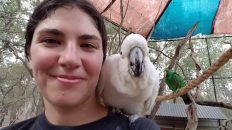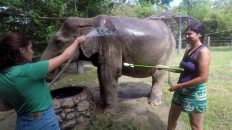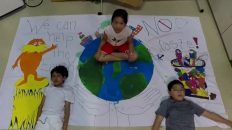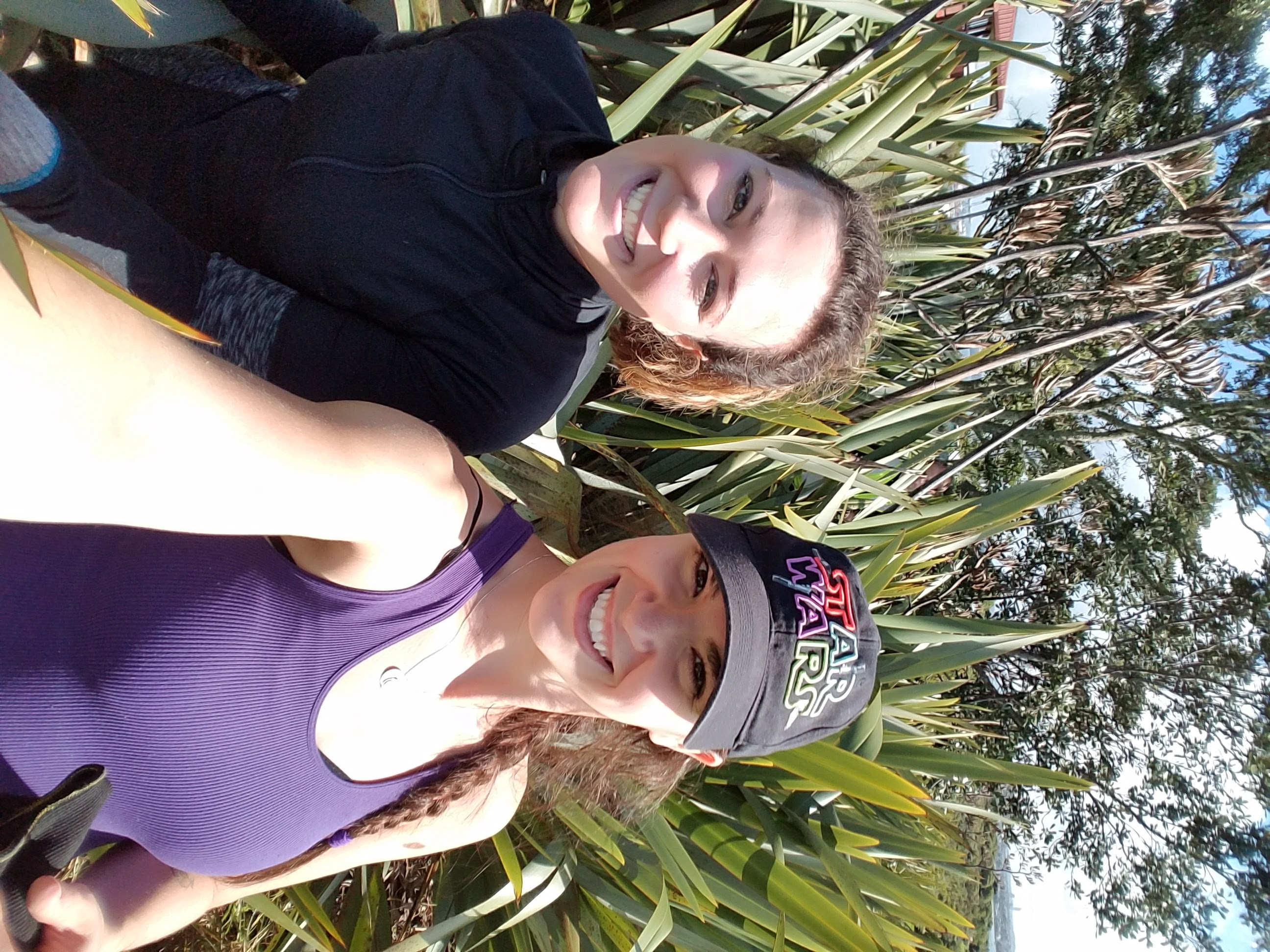 I can’t believe so much time has gone by in this new country so fast! I am truly enjoying my time here – not only am I learning a lot, but I also get to have some pretty cool experiences with some really cool people here. One of them being my best friend Jillian, who is volunteering with me on this leg of my country hopping/learning adventure!
I can’t believe so much time has gone by in this new country so fast! I am truly enjoying my time here – not only am I learning a lot, but I also get to have some pretty cool experiences with some really cool people here. One of them being my best friend Jillian, who is volunteering with me on this leg of my country hopping/learning adventure!
There have been a lot of things happening while I am in New Zealand. While I am here, I found out that my amazing professor, Dr. Susan Wray, passed away. It really hurt, not only that she is gone from this life, but also that I won’t be there for her memorial service. I remember talking with her about this trip, and she gave me some amazing advice on how to make this trip the most educational. She was truly the ‘mama bear’ of my cohort when we were getting our masters – she brought out the best of us. I would not be the educator I am today without her amazing touch of wisdom and imagination.
A huge piece of news I found out was that two shipping containers, one carrying palm oil (evil) crashed in the ocean outside of Hong Kong. This doesn’t do much to people – it is a natural substance that we can deal with. However, to the marine life that is in and around the sea, it is murder. There are chunks of pure palm oil just floating above the surface, and the oil mixed with the sea, and the sand, is suffocating our fish, crustaceans, and other animals that live in and around the ocean. There are beach cleanups happening, but that is not enough – the Chinese government is, in my friend Isaac’s opinion, not doing very much to help clean this mess. And the companies that own the freighters, and the palm oil, are not being fined or forced to help clean up their mess either. Disgusting.
One of the reasons I left the USA was to get away from the hatred and the negativity of the citizens in our country, and the bad news that pollutes the airways. I felt that there was an “us vs. them” mentality, and if I didn’t agree with EVERYTHING someone said, they automatically thought that I was wrong, or on “the other side.” I do not know, or care, about sides or who supports whom – if you listen to and respect others, especially the animals and trees, then I am open to listening to you.
The president of the USA, at this moment in history, is incredibly discomforting. There are many people that I have met so far from the other side of the world that just ask me “What the hell is going on in America? What do you think Trump is going to do or say next?” and I can’t even respond without slapping my hand on my forehead in disgust. These riots that are happening in Virginia are pretty embarrassing. I don’t even know what to think – why are these young and old white individuals yelling so much hatred? Where did this come from? Why do white power groups even exist? Also, where are the tear gas and riot police like Ferguson and the Dakota protests? Do we not see this hypocrisy?!
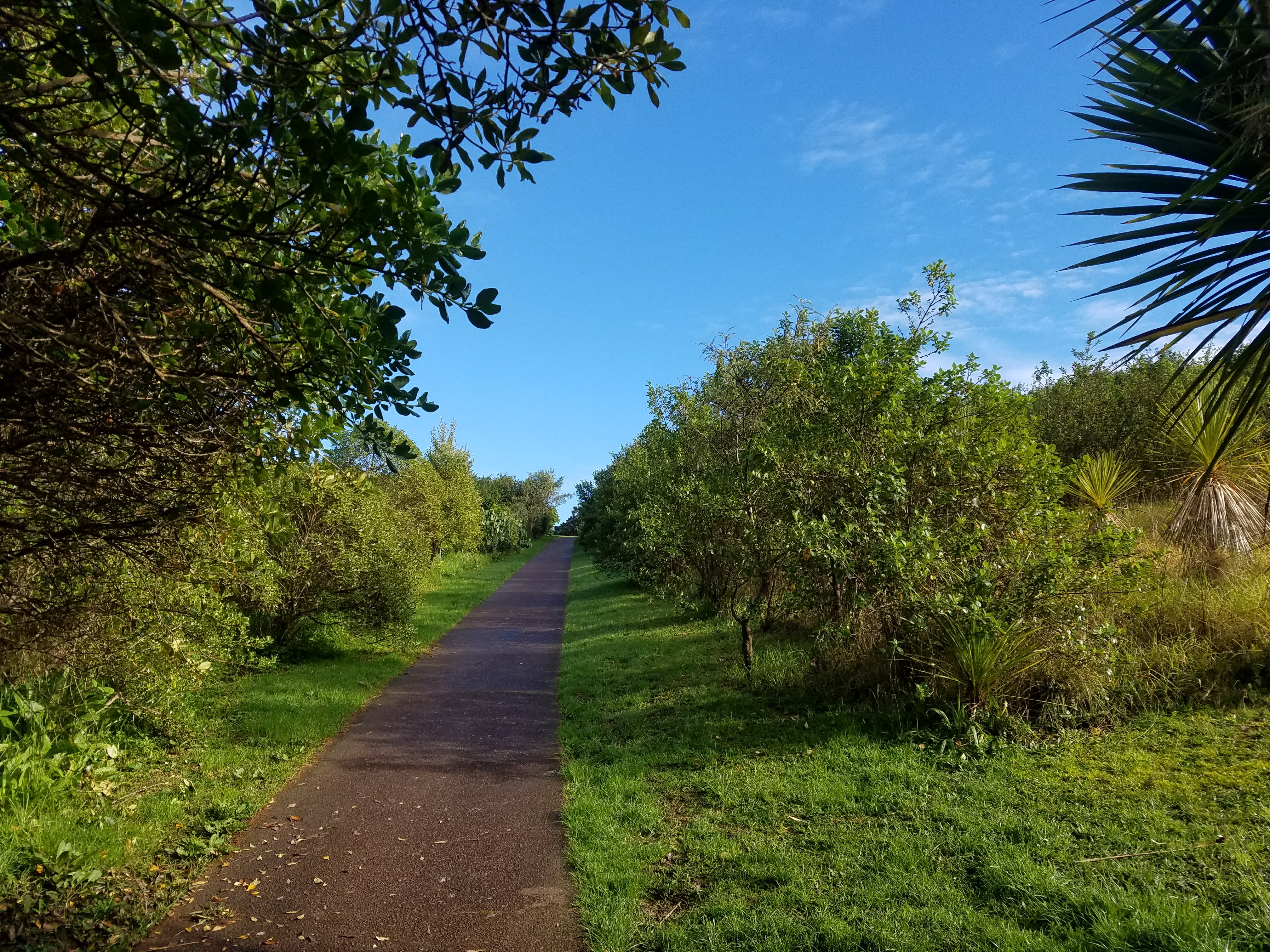 On to happier news, a little description about what I am doing in New Zealand: I am volunteering with a non-profit organization called Sustainable Coastlines. Their main goal is to make the Earth a cleaner place, and do so through education and partnerships. They currently have two programs that volunteers are a part of: one is Coastline Restoration, where individuals help clean up (aka pick up trash) the wharf around Auckland, as well as other islands around the area. The other program is the Forest and Waterways Restoration, which Jillian and I are a part of.
On to happier news, a little description about what I am doing in New Zealand: I am volunteering with a non-profit organization called Sustainable Coastlines. Their main goal is to make the Earth a cleaner place, and do so through education and partnerships. They currently have two programs that volunteers are a part of: one is Coastline Restoration, where individuals help clean up (aka pick up trash) the wharf around Auckland, as well as other islands around the area. The other program is the Forest and Waterways Restoration, which Jillian and I are a part of.
Another plus to being in Auckland is I get to learn what sustainable buildings should truly be like. The Sustainable Coastlines education center, called The Flagship, beats the Shanghai Tower by miles (or kilometers)! In one month they are going to get solar panels, which will make them a complete self-sustaining building. The building is made from 3 repurposed shipping containers, using upcycled wood that would have been just thrown away. They have composting toilets – and no, they don’t even remotely smell like a port-o-potty – that create fertilizer from our ‘business’ and saw dust. They also have a super cool filtration system that collects their rainwater to supply the water at The Flagship. This is the second best water that I drank on this trip.
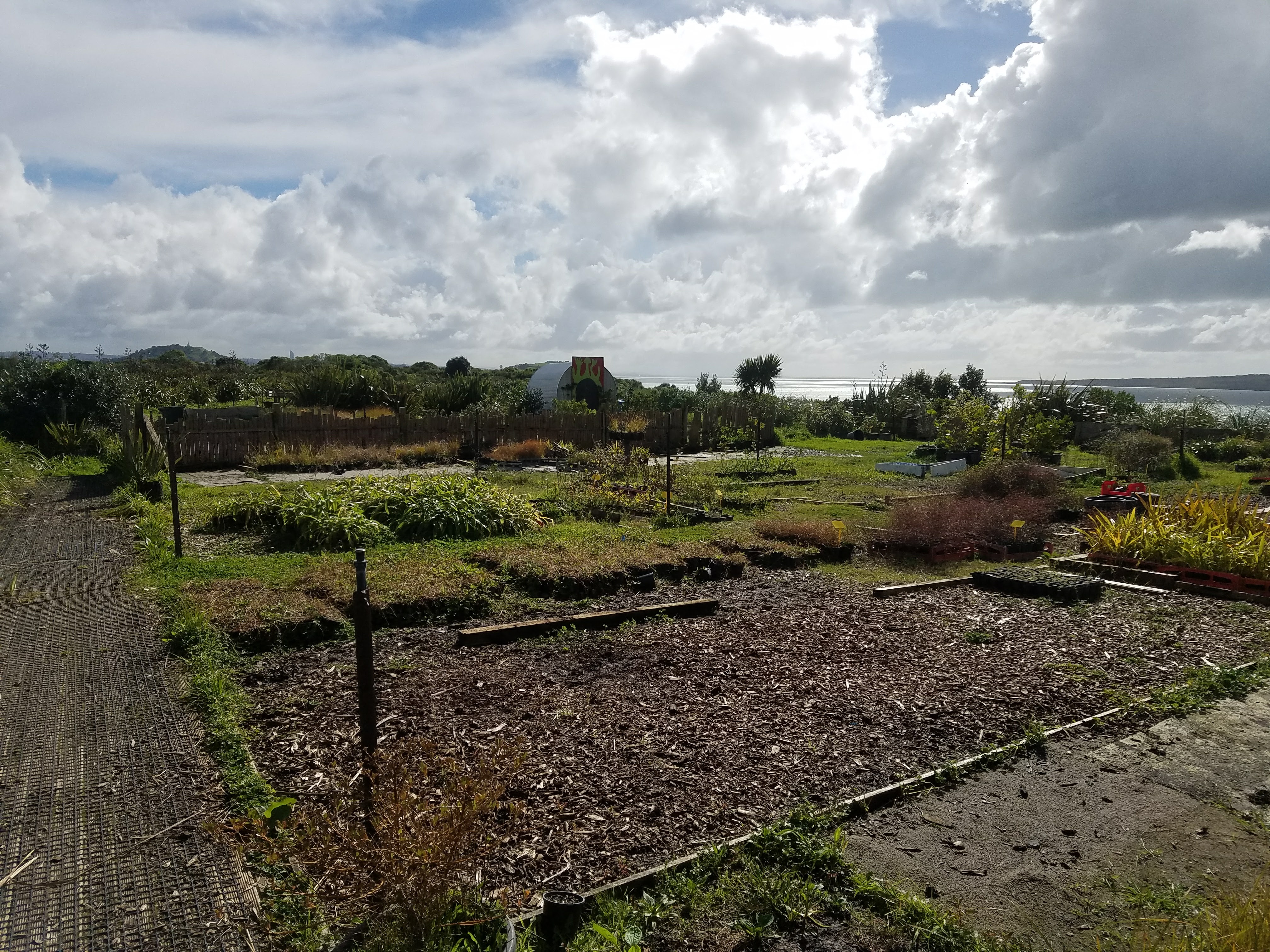 Sustainable Coastline’s partner in the Forest and Waterway Restoration project is the Ngati Whatua Orakei (pronounced na-ga-tee fa-too-ah or-ah-kay), a Maori tribe that cares for land outside of Auckland, around Mission Bay in New Zealand. The tribe is absolutely amazing – as soon as I walked on their land, I felt energized, like a young child. I had to run across the field to this new family. Their language, outlook on life and nature, and the incredible value they place on the land, is inspiring. China and the USA should definitely take some pointers from both the Ngati Whatua Orakei and Sustainable Coastlines.
Sustainable Coastline’s partner in the Forest and Waterway Restoration project is the Ngati Whatua Orakei (pronounced na-ga-tee fa-too-ah or-ah-kay), a Maori tribe that cares for land outside of Auckland, around Mission Bay in New Zealand. The tribe is absolutely amazing – as soon as I walked on their land, I felt energized, like a young child. I had to run across the field to this new family. Their language, outlook on life and nature, and the incredible value they place on the land, is inspiring. China and the USA should definitely take some pointers from both the Ngati Whatua Orakei and Sustainable Coastlines.
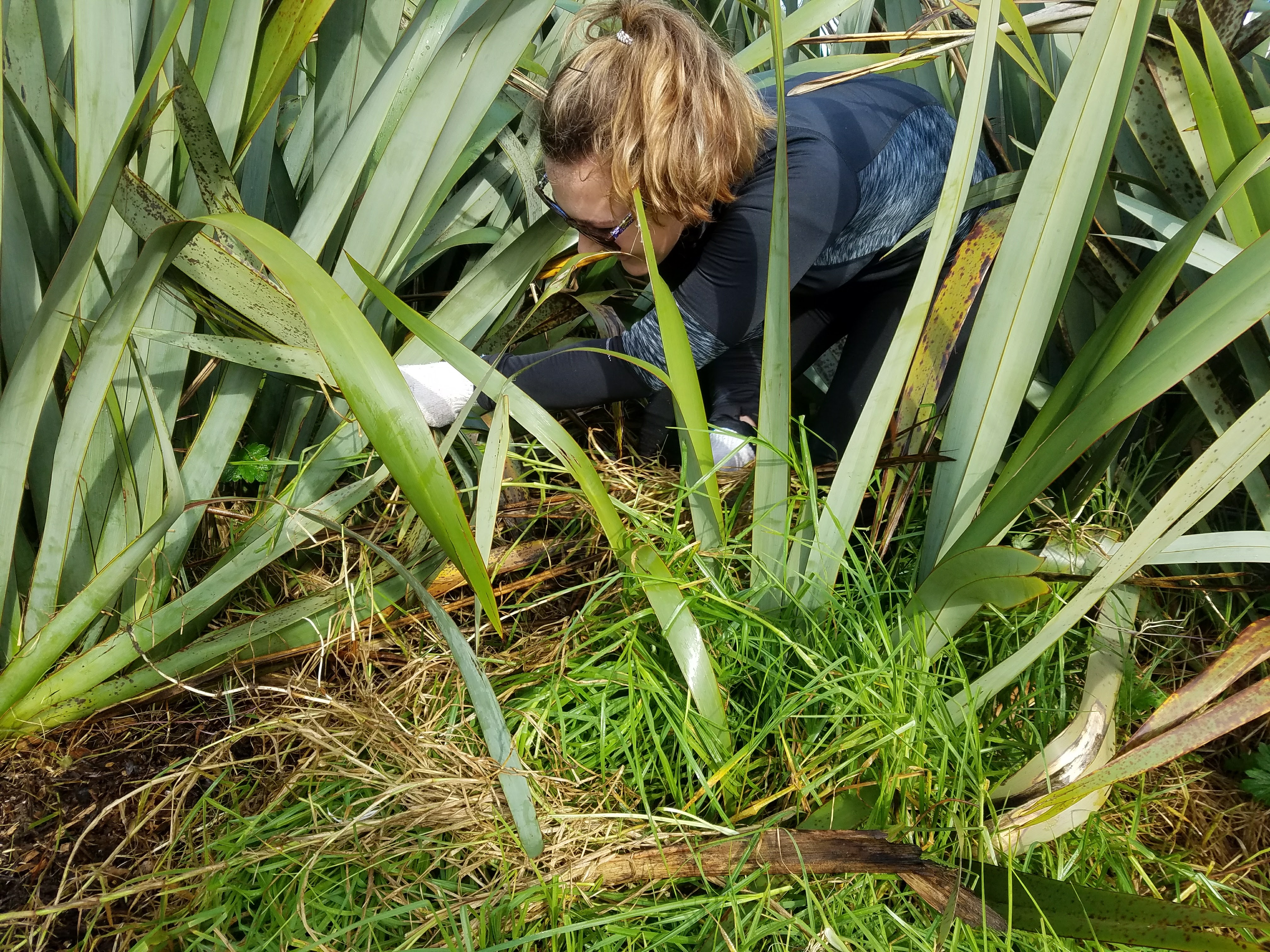 The land is so pristine – the people who work on the Orakei treat it with the upmost respect. It is the only place on the North Island that does not use any chemical spray on its plants, and they care for everything by hand. One of the activities Jillian and I are doing for the Ngati Whatua Orakei is something called ‘hand-release’ which basically means that we take all the dead leaves and weeds out of the areas where the trees and flax/harakeke (pronounced ha-rah-kee-kee) are growing using our hands. The dead leaves are then composted and used as fertilizer to help the living plants grow.
The land is so pristine – the people who work on the Orakei treat it with the upmost respect. It is the only place on the North Island that does not use any chemical spray on its plants, and they care for everything by hand. One of the activities Jillian and I are doing for the Ngati Whatua Orakei is something called ‘hand-release’ which basically means that we take all the dead leaves and weeds out of the areas where the trees and flax/harakeke (pronounced ha-rah-kee-kee) are growing using our hands. The dead leaves are then composted and used as fertilizer to help the living plants grow.
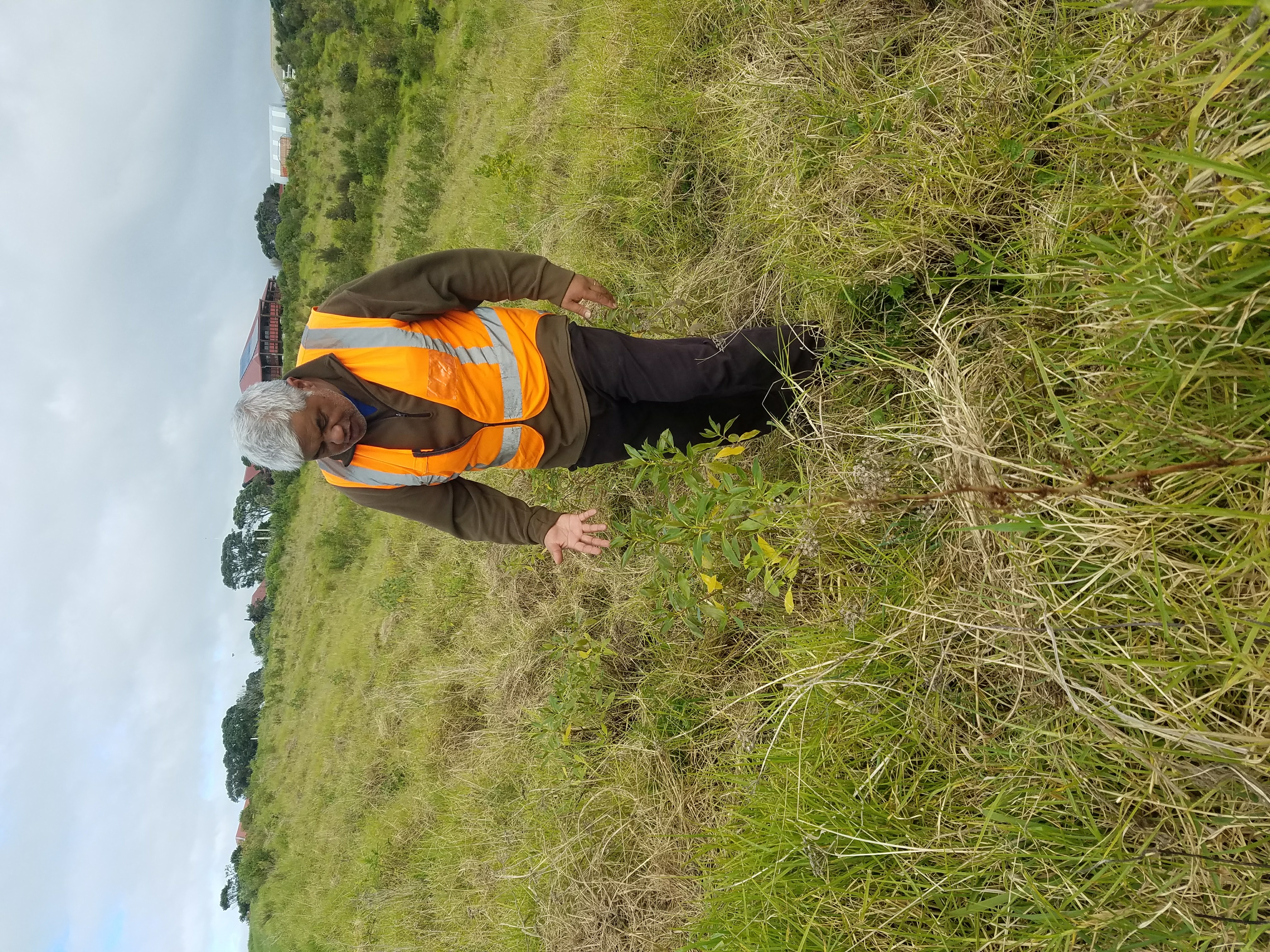
It is such a relief to be able to compost my food and other items at the Flagship and the Orakei. One of the things I was very proud of was reducing my family’s waste by composting our food, and I love saving my scraps to add to the worm food for the land! They also have compostable toilets like the Flagship. The Ngati Whatua Orakei have even hosted festivals and celebrations of 1,000 or more people, completely zero waste! It is so totally cool that they are just modeling best practices of Earth-saving.
Because the Maori do not use any bad chemicals on their land, and they care for it so well, the water from the land is the best water that I have drank this entire trip. Sustainable Coastlines also gave me a beautiful stainless steel water bottle to use for the rest of my adventure. Not only are these two organizations very environmentally conscious, but a lot of New Zealand is also moving towards a more sustainable lifestyle. I saw compost garbage trucks, and even spoke to the manager of a Timberland store, and found out his 11 stores in the Auckland area are all zero-landfill stores.
It is for the above reasons, and many more, that I am absolutely in love with New Zealand.
Below are some activities and a lesson to do with the above video blog. Please let me know if you enjoy these by filling out this form.
Activities to do:
- Do a ‘sift and find’ sort in sand of what does and does not belong in the ocean/beach. You can make the sand sort as big or small as you want, and use small marine animal toys and plastic items you would normally use and throw out. For my zero-wasters, I am sure you have a few friends that still need some educational help on transitioning away from plastic that you can take some items off their hands.
- For some extra visual assistance, print and laminate my Does and Doesn’t Belong Ocean Visuals.
- Do/organize a community cleanup! Clean up your backyard, your local park, beach, reservation – anywhere people go to utilize the beauty of the outdoors. Gather all the rubbish and make one large statue (like I did to teach about Plastic Waste in China) or small individual statues with your child/students.
- For older students: watch https://www.nzonscreen.com/title/bastion-point-the-untold-story-1999 and have one or more social justice discussions/projects/units of the history of the Maori of New Zealand/the Ngati Whatua Orakei. I can say firsthand that the people on the reservation are not in-your-face about what happened, or bitter about anything. They just accept this as part of their history and are grateful for the programs they have now and just want to make the land and the world a better, more peaceful place for everyone in their whanau, or extended family (I am now an honored member of their whanau, pronounced fa-no).
Lesson: Where do you get your mana from?
Objective: You will draw, write, and describe your ‘mana’, or spiritual power.
Essential Questions:
- What makes you happy?
- How do you feel when you achieve something big? (Do you want to share a time this happened?)
- What and who inspires you?
Materials:
- Ball of yarn (if playing The Web game – see below)
- Video player (SMARTboard, etc.)
- Whiteboard (to write student reflections) or poster board
- Paper (reused paper, blank paper, or a writing journal)
- Markers/pens/pencils
- Stickers/visuals (for students to cut and paste onto their picture – for students who may not be able to draw or write independently)
Procedure: When we introduced ourselves to our program leader of the Ngati Whatua Orakei, also known as Merv, we had to describe where our ancestors came from, as well as where we get our “mana” from. Mana means spiritual power, or inspiration. I get my mana from trees and teaching – and other things, but I could only choose two. To understand ‘mana’ and the Maori belief on children and education, this is a great article to read prior to doing this lesson.
During our orientation into the SC program, we played a game called “The Wind Blows” where everyone would be in a circle and someone would say “The wind blows if someone ___” and the objective was to find things in common with others. For example, “The wind blows if someone likes the color green,” (or plays soccer, or can do a cartwheel, etc) and then if you have that in common, then you would move into the middle of the circle and change your spot in the circle.
I have also played a game called “The Web” using a large ball of yarn, where someone would yell “I like __” (or “I can__ or I have___ etc) and someone would raise their hand if they have that in common. The person would then throw it to one person with their hand up, and the game would continue. Everyone would be holding one or more pieces of the connected yarn ball and in the end, we would create a large web, the objective being that we find that we all share things in common with each other.
I enjoy starting lessons with a story and either with a dance or some kind of interactive game. For this lesson, play “The Wind Blows” or “The Web” game with your students and see what connections you can create with your group. Reflect with the group for about 5 to 8 minutes after completing the game – did they learn anything about their peers, themselves, their teacher? What would they have done differently if/when your group plays the game again?
After the reflection, show them the above vlog video, and explain to them what ‘mana’ is, and is not. (For older students, Ted Talks are great resources, this one helps explain mana and how it defines you as an individual ) It is not usually a person, or money, or an item like a pair of shoes. Mana is more like what brings you peace and inspiration, like the beach you always went to as a child, or the feeling you get when you hug a tree, go to church, or smell your mom’s homemade gravy. You can ask for some examples from students to write on your whiteboard so they can get some understanding/ideas of what they could write about. You are also welcome to use my New Zealand journal pages as examples too.
Give the students/child independent time to use various materials to draw/copy/write where they get their mana from. Let them volunteer to present their picture and explain their mana to the class/family.
No matter how old or young the students are, I always love giving them a creative outlet to express themselves. For this lesson, it is great to give them freedom to explain their mana in many different ways – whether it be a poem, essay, piece of art, or even a dance!


